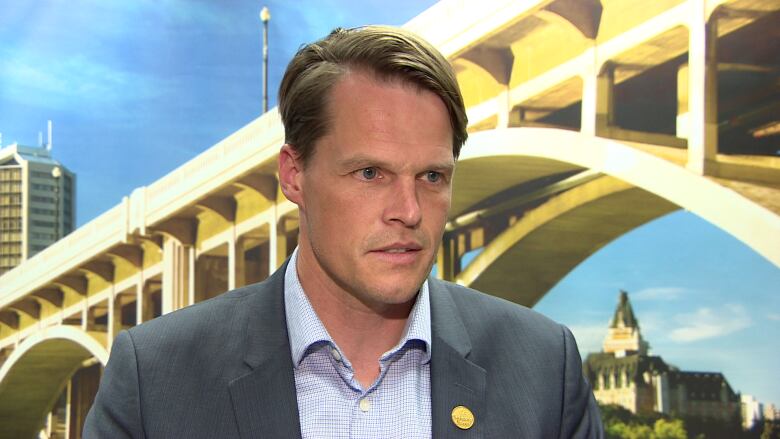Saskatoon needs to address 'people falling through the cracks' to tackle crime rate, says mayor
City's crime rate rose for 2nd year in a row

Saskatoon's crime rate won't go down unless the city deals seriously with underlying problems, like poverty, addiction and racism, according to the city's mayor.
"We know there are still people falling through the cracks. We know there are issues around poverty, drug addiction and mental health and racism and other things that are creating challenges in our community," Charlie Clark said.
Saskatoon's crime rate rose for the second year in row, according to new data released by Statistics Canada.
- Sask. has the highest provincial crime rate in Canada and the most severe crimes, too
- What are police doing about Regina's rising crime rate?
Saskatoon was second only behind Regina in terms of overall crime rate.
The two Saskatchewan cities also led the nation in the annual crime severity index, which measures the seriousness of crimes based on what penalties they attract in court.
Youth crime down, sexual assaults up
Saskatoon did see some bright spots. Youth crime, break and enters, and robberies were all down year-over-year from 2015 to 2016.
Sexual assaults, attempted murders and frauds,however, spiked.
Clark said while some of the numbers are disturbing, the successes in some areas show that some early intervention programs,like those aimed at youth and young offenders, are working.
Clark said it's not always about policing, and that as a society people here have a choice: whether to help try to prevent crime or to simply react to it.
"Do we spend money on hospitals and jails, and more and more emergency room beds and more and more prison cells and police cells, or do we start to really strategically invest and find where are people falling through the cracks?" Clark said.

Mayor wants to focus onprevention
Clive Weighill, Saskatoon's outgoing police chief, agrees.
"We have to money into housing; we have to put money into jobs; we have to put money into education," Weighill said.
It costs $100,000 to keep someone in jail for a year. It costs $20,000 or $30,000 to get through university.- Charlie Clark, Saskatoon mayor
Clark did vote to last year to add more police to the Saskatoon ranks. Police are still needed on the front lines, he said, because they are picking up much of the slack, dealing with mental health, addictions, homelessness and housing issues that are outside of their purview.
But he hopes in the coming months and yearsthings will be different. He's advocating for a more co-ordinated approach where prevention is at the forefront.
While budgets are tight, he said, prevention, early intervention and treatment is more cost effective way to keep Saskatoon safe.
"It costs $100,000 to keep someone in jail for a year. It costs $20,000 or $30,000 to get through university," he said.
Better understanding of root causes needed, says expert
Robert Henry, who works with Str8-Up(a gang outreach and prevention program in Saskatoon), said far too often police and politicians are painting people who are living in poverty with too broad a brush.

He said while poverty, the legacy of residential schools and colonialism are huge factors in some of the crime going on in Saskatoon, not everyone who lives in poverty or experienced trauma from residential schools chooses to commit crimes.
"We need to move away, in my opinion, from the idea of just blaming people for their actions. We need to understand their stories behind their actions," Henry said.
"I think once we can start putting human-ness to this rather than just the statistics. We can begin to actually look at asking them: Why are you doing this and how can we can better support you?"
- MORE SASKATOON NEWS |Vicki Mowat wins Sask. NDP byelection nomination for Saskatoon-Fairview
- MORE SASKATOON NEWS |2 youth warned for mischief in Canada Day porta-potty toppling












_(720p).jpg)


 OFFICIAL HD MUSIC VIDEO.jpg)
.jpg)



























































































